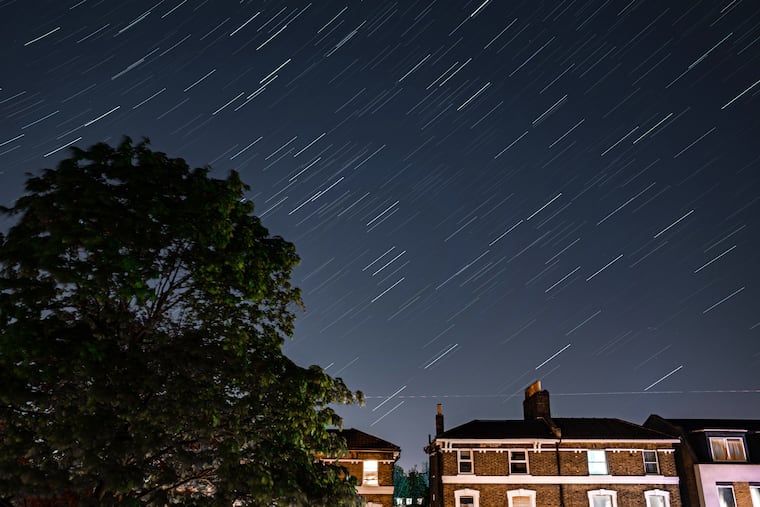Most intense meteor showers of the year are peaking, but viewing hours ‘are not the best’
As many as 30 to 40 an hour might be visible ... if you're awake.

If you’re awake early Tuesday morning, don’t mind a modest December chill, and have access to a dark sky, chances are excellent that you will catch sight of some shooting stars as the Geminid meteor shower, the most-active of the year, reaches its peak.
Unfortunately, the waxing moon, ordinarily a welcome sight on a clear night, is going to be near 80% full and will be dominating the sky from nightfall until it sets around 2 a.m.
And, yes, this drill might seem familiar to those who managed to catch the lunar eclipse during the early morning hours of Nov. 19. Nature evidently doesn’t care much about our circadian rhythms.
In this case, after 2 a.m. Tuesday the meteor viewing should be good for the next few hours as dawn’s first light doesn’t creep across the sky until after 6:30 a.m.
And, there’s a bonus: The show continues until Friday, but the meteors will be fewer and moon will be beaming brighter and remaining in the sky longer.
While they appear to emanate from the constellation Gemini, hence the name, veteran meteor watchers advise that they could appear almost anywhere in the sky.
“This year’s conditions are not the best,” NASA notes. But on occasion the Geminids will produce “green-colored fireballs,” says Bill Cooke, chief of the Meteoroid Environments Office.
Since they are denser than other meteors during the year, including the more-popular Perseids, NASA says, they can make it to within about 30 miles of the Earth’s surface before they incinerate and sign the sky with their meteoric trails.
Meteor showers occur when the Earth encounters celestial debris on its annual 584 million-mile journey around the sun.
» READ MORE: Perseid meteor shower is peaking, and the moon is getting out of the way
The magazine Sky and telescope likens the phenomenon to a car plowing through a snowstorm.
The debris for the Geminids, speeding toward Earth at a brisk 78,000 mph — 40 times faster than a fired bullet, NASA says — is supplied by an object called 3200 Phaethon, which some believe to be an asteroid and others, an extinct comet.
Whatever Phaeton’s source, the effects are similar.
“Realistically,” NASA says, only 30 to 40 meteors will streak across the sky during the peak period.
At least the weather will be cooperating. Skies should be clear, with temperatures in the mid-30s, not bad for mid-December.